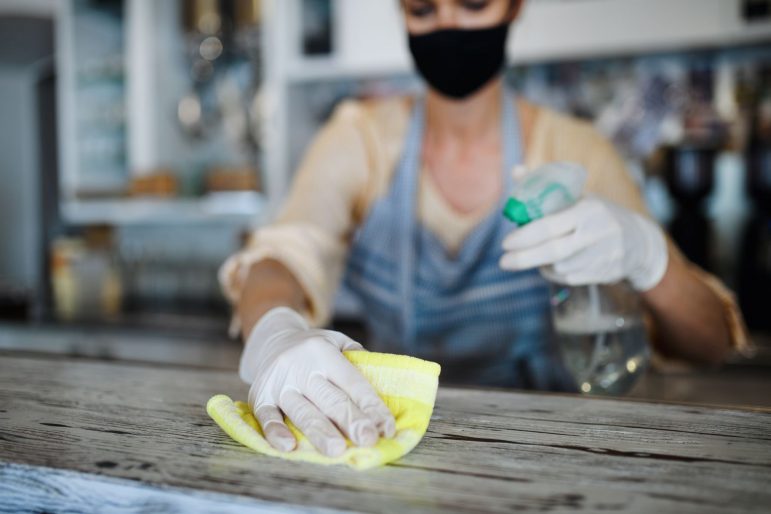At the outset, it is important to stress that disinfection is necessary and important. I am a microbiologist and have been developing training courses on hygiene and sanitation for many years, so I am biased in favour of anything that has to do with disinfection. However, I am an advocate of thoughtful disinfection and the judicious use of our battle weapons. There is no need to use a bazooka to kill a fly.
With the continuation of COVID-19, we need to take into consideration the evolving scientific findings, face the facts, and change our preconceptions; surface disinfection has its place, but is not the chief weapon in the fight against the transmission of the virus.
At the very beginning of the pandemic, we firmly believed that COVID-19 was transmitted primarily through surfaces. It was legitimate and entirely sensible and reasonable, at that time, to adhere to that belief. It was also the most common preventive position in the world to ensure that the transmission of a previously unknown infection was limited.
As the months passed, more and more studies were done on the survival time of COVID-19 on surfaces. Three hours, 12 hours, three days – there were some suggestions it could even last up to 17 days on surfaces. However, the survival time of a germ on a surface does not necessarily mean that it is still infectious.
In more recent pandemic times, it has become apparent and accepted that COVID-19 is generally more likely to be transmitted by droplets, close contact, and even by aerosols that would remain airborne than by surface contacts. Few recent case studies report probable transmission through a freshly contaminated surface, but this remains difficult to prove definitively as it is impossible to exclude respiratory transmission. But numerous reports show that hand hygiene is a more effective barrier to virus transmission than surface disinfection. That was echoed by the CDC in the US, which clearly stated last year that this virus is very poorly transmitted through surfaces and the risk of contracting COVID-19 on an object and becoming contaminated is very low. They even suggested a one-in-10,000 chance.
Why is surface disinfection so overly promoted?
Surface disinfection is effective and recommended to prevent infection if you live in the same house as someone who has contracted COVID-19, but disinfection of indoor and outdoor public areas does not seem to be as effective.
It is important to note that studies show that the extensive use of disinfectants has already caused a significant increase in respiratory problems, such as asthma, in the population. There are also many more incidents of poisoning from disinfectant chemicals as reported by an increase in calls to poison control centres across the country.
On the other hand, disinfection has a major advantage. By eliminating all other surface-borne infections such as colds, flu, gastroenteritis, and others, it makes it easier to identify people who are infected with COVID-19 since virtually no other infections are currently circulating. Now so deeply anchored in our habits, disinfection is closely linked to the safety of public environments and will henceforth be required and highly valued by the population. Disinfection must absolutely be maintained as part of a sanitation program, not only for its effects on public health but also for its contribution to alleviating people’s concerns.
In short, without putting a stop to disinfection, the time has come to revisit your disinfection practices, because over-disinfecting can cost you a lot of money. Don’t let your guard down, but ensure you have the right battle weapons. Overzealousness can be as bad as negligence, so the first thing to do is to check whether you are disinfecting too much, too little, or just enough. Assess the risks associated with your environment and adjust your disinfection frequencies accordingly while respecting the standards in effect in your area.
Ultimately, fair and thoughtful disinfection is crucial. Please do not eliminate this step from your protocols, but you should not be afraid to change your protocols, nor should you do what everyone else is doing just to comply. Being adaptable and adjustable does not mean you are influenceable or indecisive, it simply shows you are keeping up with the latest information and making well-thought-out decisions. Adapt your disinfection protocols to your own situation.
Nathalie Thibault is the Training Director of ValkarTech, a Canadian consulting firm that guides, supports, and advises its clients on ways to optimize the operational performance of their organizations in terms of building hygiene and sanitation.








